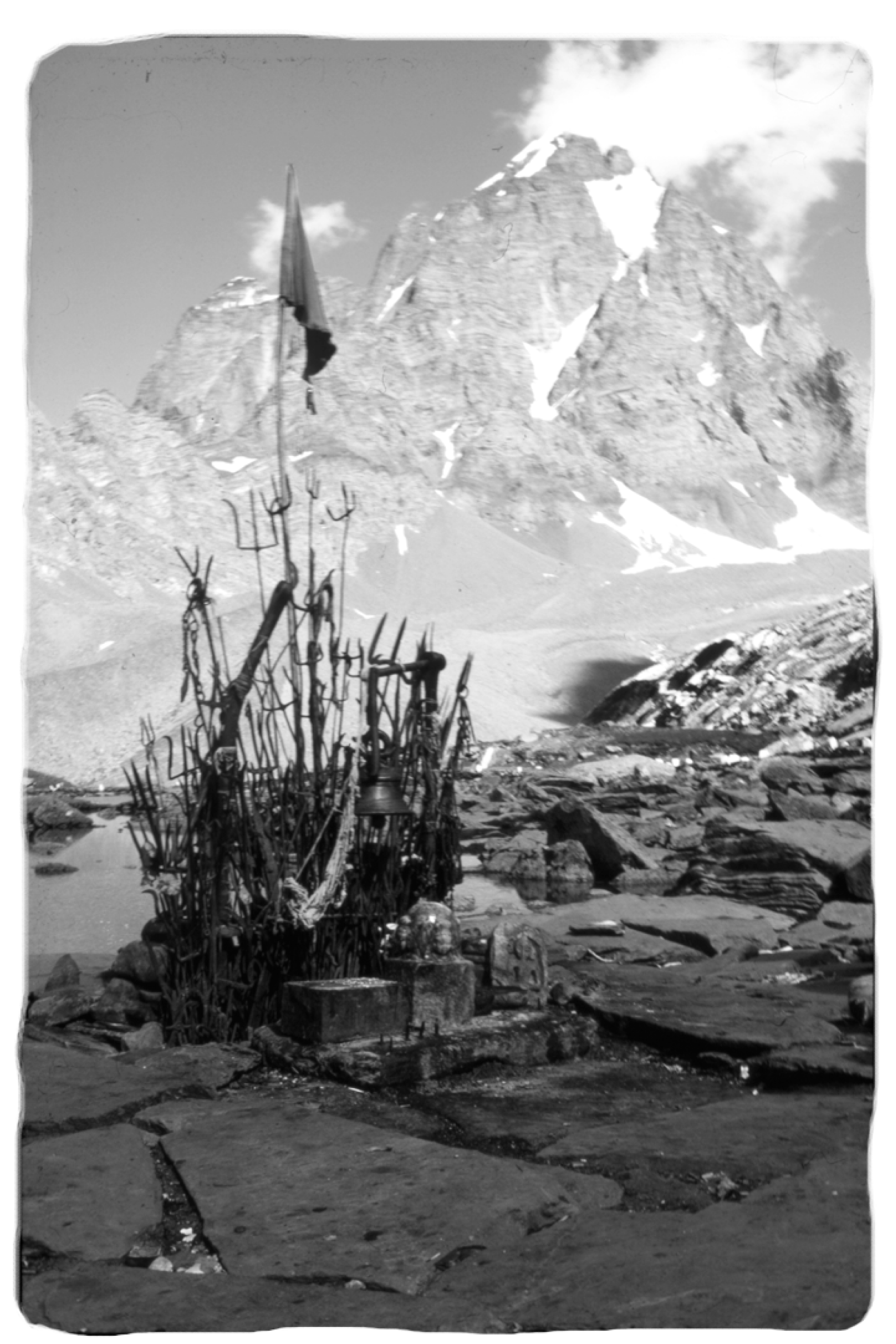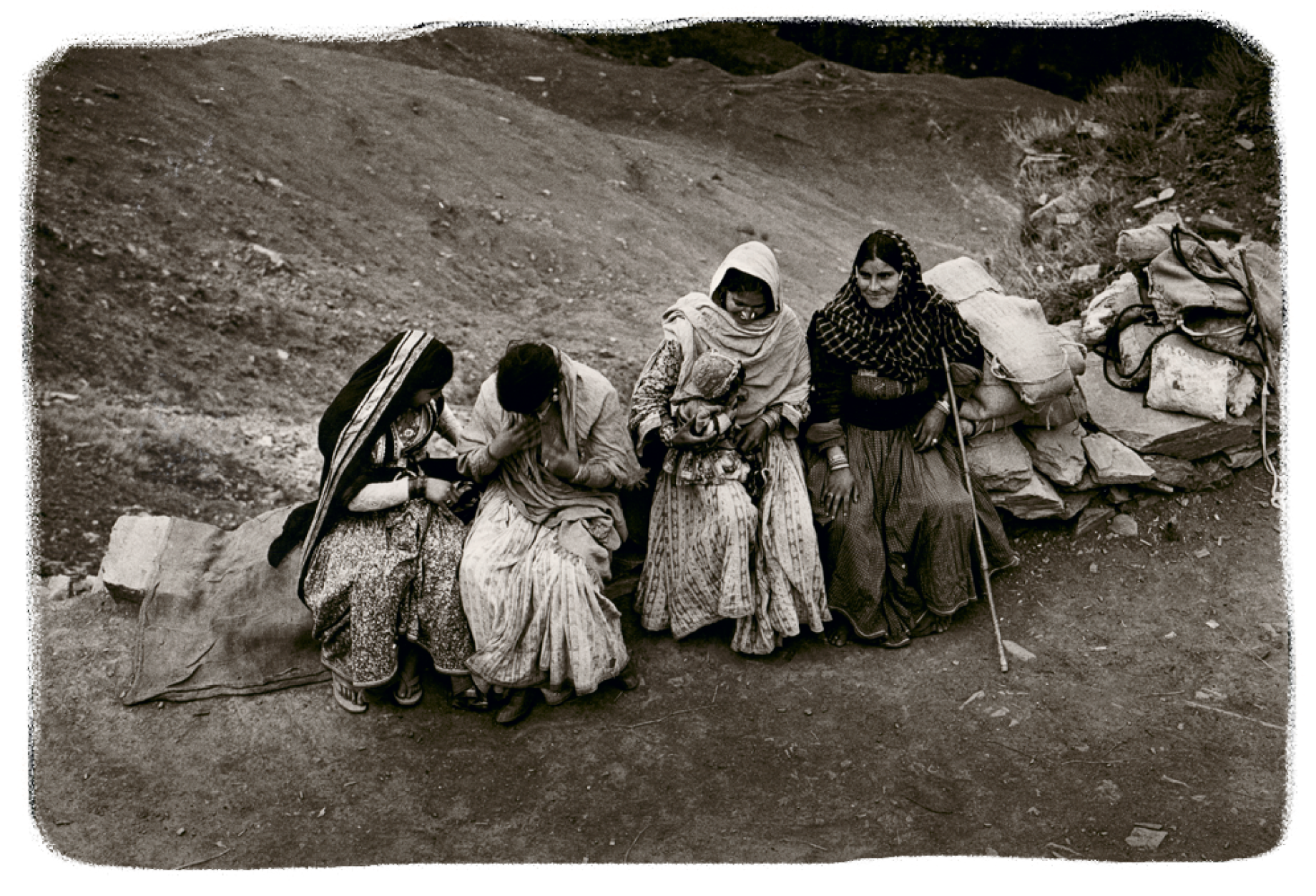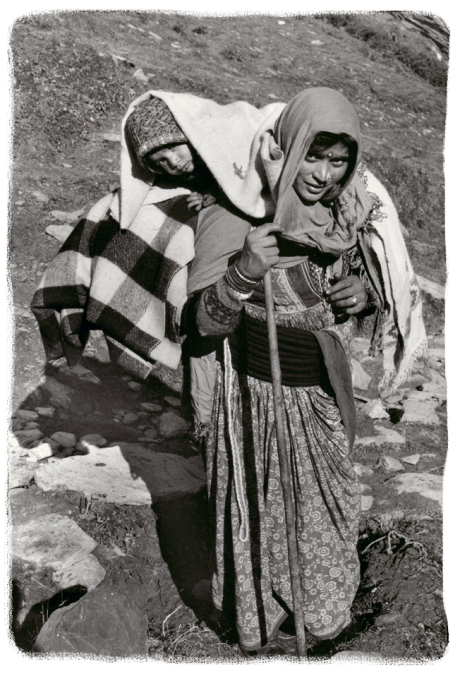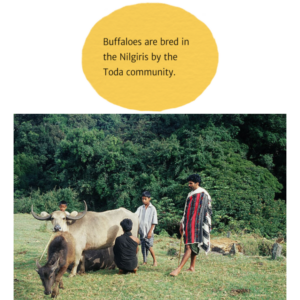Christina Noble
with the Gaddis of Himalaya
Flock of goats and sheep crossing the Rothang Pass 13,200 ft into Lahul from Kullu 1980
Kugti Pass, one flock on the pass 15,500 ft, another resting below. Crossing from Lahul to Bramour 1982
My next experience of Gaddis was on my first trek in the Himalayas. We had climbed up to the Kali Hind pass, 15,500 ft pass, west of Manali, Kullu and had spent some time sitting on its crest absorbing the eerie silence and the sense of eternity. Suddenly from the glacier below there was a faint bleating. There, caught in the opaque green ice, was a lamb. We pulled it out and cradling it slithered down the glacier and were struggling on the loose boulders of the moraine when we saw a shepherd coming up. Having crossed the pass much earlier he had reached his camp and then found the flock was a lamb short. He was astonished that anyone but a shepherd would have bothered to rescue the foundling. A day or two later we reached a village. He took me up into a house and insisted that his sister become my “dharm-behen”. She and I performed a ceremony; gave each other three nibbles of ghee, and three of gur, placed a tika mark on each other’s forehead, touched each other’s feet and then embraced, to the right and to the left twice. For years afterwards, though we seldom met, her village was a 10 day walk from Manali, we occasionally sent each other presents. She sent a few jars of ghee and the medallions that Gaddinis wear, and I sent packets of tea or coloured head scarves.
Gaddi Pastoralists today recall their hardy native breeds who were able to make these precarious journeys with a firm foot, and a sharp eye; Many herders say that the cross breeds they now rear are more obedient, easier to shepherd, but do not have the nimble footedness of the native breeds. They regularly lose quite a few in their flocks only because they cannot make it through these slippery treks to reach the alpine meadows.
Gaddi and flock coming down from the Sach Pass from Chamba into Lahul 12,500 ft. 1980



























































